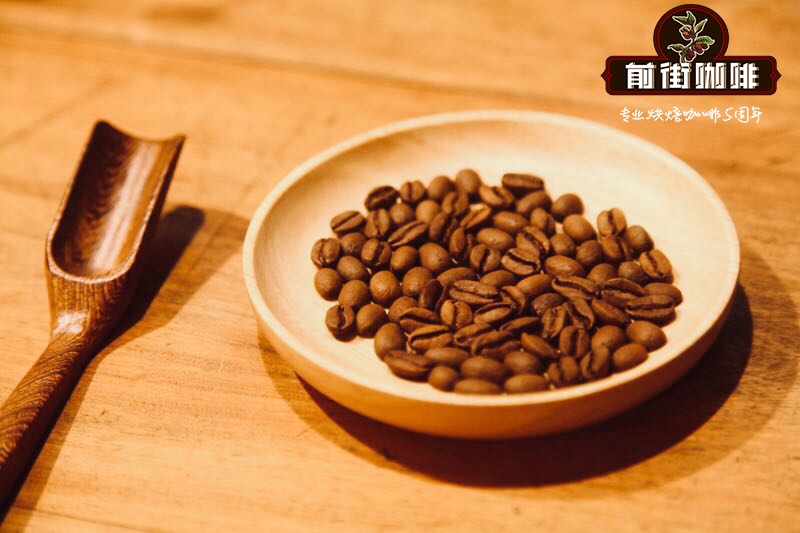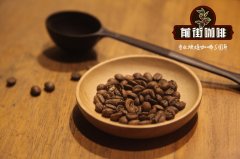The Development of Coffee in Laos is the best coffee in the world in Laos?

Professional coffee knowledge exchange more coffee bean information please follow the coffee workshop (Wechat official account cafe_style)
The high quality that appears in the original
However, this forgotten land is growing rapidly because of coffee cultivation.
When he arrived on the plateau, under the leadership of the interviewee, he visited the coffee farm he was proud of, pointed to the endless coffee trees, and smiled and described it as the "coffee skyline", just like the skyline in the city, but he was referring to the coffee trees with no end in sight. In the process of chatting, he always said that he had spent a lot of money and energy to build the manor into such a neat appearance as it is now 3 meters wide, matching the flat terrain of the plateau and making use of high-priced imported machines. compared with the previous harvest in other alpine producing areas in the world, it is faster and better, and more and more foreign-funded enterprises on the plateau are interested in this point to invest here. The beans picked are processed and then sent to high-tech computers to select beans, resulting in a rare and noble Lao coffee on the market.
Listen to these, continue to impact my perception as a consumer. As for the so-called traditional industries of the Lao ethnic minorities, in the past, most of the household growers turned to workers in large enterprise estates, and the production process has long been in line with the trend and has been continuously improved through man-made and science and technology, and the Lao workers employed in most of the estates have to constantly learn new knowledge of bean evaluation in order to ensure that Lao coffee can have a place in the huge high-quality coffee bean market. This has nothing to do with what I heard about the original at all.
For investors, pure virgin land can not guarantee the growth of coffee, only planned large-scale production can ensure the quality of the product. Such a change may be drastic, and it seems to us that Laos, which is as pure as white paper, is constantly subjected to all kinds of rough development, but the local residents are immersed in joy. even the government is looking forward to the changes brought about by coffee beans, hoping that this crop of high economic value can attract more foreign investment and bring more income to promote local development.
Laos, as a rapidly developing country, shows its diverse features in the process. As a distant bystander, we must be more careful to construct our imagination and cognition. Perhaps, the pure land "Laos", which is at peace with the rest of the world, is gradually disappearing and becoming more and more like us, but so what? Only by accepting can you really understand, can't you?
After the French colonial coffee-rich Bolaven Plateau once abandoned farmland during the war, Lao coffee farmers are trying to rally into the top market after the government opened up private enterprises and coffee bean prices soared.
There's a kind of renaissance taking place where people are relearning how to make good quality coffee.
Sinouk Sisombat, president of the Lao Coffee Association, recently showed off his own coffee beans in an exclusive interview with time magazine, describing them with a serious and proud expression: "these are pure Arabica coffee beans with a very mild taste and proper acidity. Acidity is the hallmark of quality coffee. "
Born in Laos, Sisumba has lived in France for many years and now owns a 50-hectare coffee bean garden on the Borrofen Plateau in southern Laos. In addition to Xi Samba, more and more coffee companies in Laos have recently come here to grow coffee beans, making Laos coffee more prominent in the global market.
The planting environment of Borofen Plateau is excellent.
In fact, the history of the coffee bean industry in Laos can be traced back to the French colonial era before the first century. At that time, the French found that the Borrofen Plateau was located at high latitudes and the soil was rich in minerals to provide an excellent growth environment for coffee beans, so they introduced planting techniques and began to cultivate coffee beans in large quantities.
Unfortunately, not long after the second World War began, the French fled Laos one after another, and the Borofen Plateau became a battlefield. In the next 20 years, the gunpowder left by the war at home and abroad seriously polluted the soil of the plateau, coupled with the fact that Laos regarded coffee as a product of capitalism under communist totalitarianism at that time, resulting in only a small amount of coffee bean production on the Borrofen Plateau.
The Xi Samba family moved to France during the civil war, and it was not until the Lao government gradually opened up private enterprises in recent years that he and his father, a former commerce minister, decided to return to their homeland in 1992 and chose to develop coffee beans into a family business.
Sisumba bought land on the Borrofen Plateau to grow coffee beans and sent the first harvest samples to a coffee research institute in Montpellier in southern France to identify the quality. The results were highly praised, and Sisumba has been determined to enter the top coffee market ever since.
Important Notice :
前街咖啡 FrontStreet Coffee has moved to new addredd:
FrontStreet Coffee Address: 315,Donghua East Road,GuangZhou
Tel:020 38364473
- Prev

Which brand of Jamaican coffee is better, Jamaican Blue Mountain Coffee or Hawaiian Kona?
Professional coffee knowledge exchange more coffee bean information please follow the coffee workshop (Wechat official account cafe_style) people may ask what makes the Blue Mountain Coffee of Jamaican Coffee so special? The answer is everything about it. The real Blue Mountain Coffee is one of the most favorable coffee growing conditions in the world. The weather, geological structure and topography of Jamaica provide a unique reason.
- Next

Is it difficult to cultivate coffee beans in Laos? is the quality of Arabica coffee beans good in Laos coffee?
Professional coffee knowledge exchange more coffee bean information Please pay attention to coffee workshop (Wechat official account cafe_style) Arabica coffee beans are difficult to breed. Coffee beans are now the most important agricultural export in Laos, but Arabica coffee beans, which are difficult to cultivate, account for only 1/3 of the total output. Laos exports tens of millions of US dollars worth of coffee beans every year, which is still less than that of Vietnam.
Related
- Beginners will see the "Coffee pull flower" guide!
- What is the difference between ice blog purified milk and ordinary milk coffee?
- Why is the Philippines the largest producer of crops in Liberia?
- For coffee extraction, should the fine powder be retained?
- How does extracted espresso fill pressed powder? How much strength does it take to press the powder?
- How to make jasmine cold extract coffee? Is the jasmine + latte good?
- Will this little toy really make the coffee taste better? How does Lily Drip affect coffee extraction?
- Will the action of slapping the filter cup also affect coffee extraction?
- What's the difference between powder-to-water ratio and powder-to-liquid ratio?
- What is the Ethiopian local species? What does it have to do with Heirloom native species?

